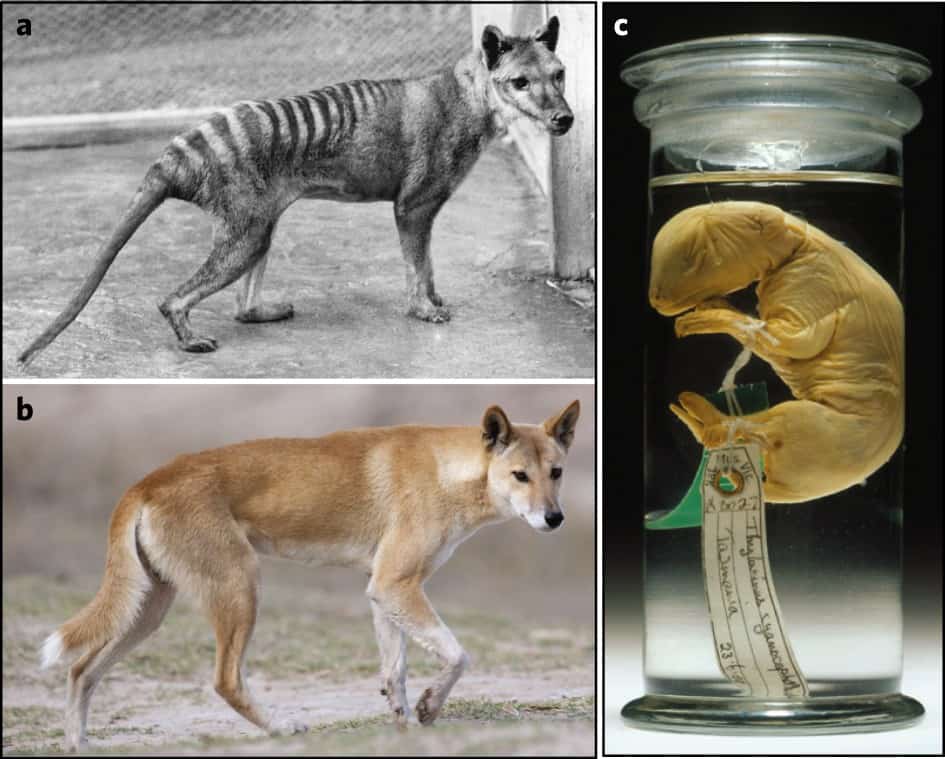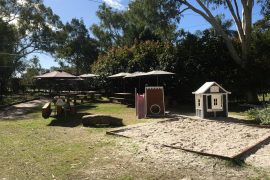Welcome to the Enigmatic World of the Thylacine – The Tasmanian Tiger
Hey there, curious parents and children! Are you ready to embark on a historical adventure and explore the compelling tale of the thylacine, better known as the Tasmanian Tiger? This creature’s story is not just about a species that once roamed the wilds of Tasmania, but about our connection with nature, mystery, and the importance of conservation. So, grab your explorer’s hat, and let’s journey together into the lost world of the thylacine!
A Glimpse into the Past: What Was the Thylacine?
Imagine a creature with the grace of a large cat, the striking stripes of a tiger, and the elusive nature of a ghost. That was the thylacine, a marsupial unlike any other. It was neither a tiger nor a dog, but a unique species that carried its young in a pouch, just like kangaroos and koalas. With a scientific name, Thylacinus cynocephalus, meaning ‘dog-headed pouched one’, this fascinating animal was the largest carnivorous marsupial of modern times!
Decoding the Thylacine: Features and Habitat
The thylacine was a remarkable example of convergent evolution, where unrelated species develop similar traits. It resembled a large, slender dog with a stiff tail and a distinctive set of dark stripes across its back and tail – hence the name ‘Tasmanian Tiger’. Despite its canine appearance, the thylacine was more closely related to kangaroos and koalas. It lived in the bushland, grasslands, and wetlands of Tasmania, Australia, and New Guinea.
The Role of the Thylacine in Tasmania’s Ecosystem
Thylacines were apex predators, meaning they were at the top of the food chain. They played a significant role in balancing the ecosystems of their habitats. By controlling the populations of other animals, they maintained the health and diversity of their environments. Studying the thylacine’s impact gives us invaluable insight into Tasmania’s natural history and emphasizes the importance of each species in an ecosystem.
The Disappearance of the Thylacine
Unfortunately, the thylacine’s story took a tragic turn. Once abundant, by the 20th century, these majestic creatures had been hunted to extinction. Fear, misunderstanding, and a bounty system contributed to their decline. The last known thylacine died in captivity in 1936, marking a dark chapter in human-wildlife relations and leaving behind a legacy wrapped in mystery and regret.
Learning from History: Conservation Lessons
The loss of the thylacine highlights the catastrophic impact human actions can have on wildlife. Parents and children alike can learn from this sobering example – the importance of respect for all living creatures and their habitats. By fostering an attitude of conservation and stewardship, we ensure that no other animal faces the same fate as the thylacine.

Welcome to the Enigmatic World of the Thylacine – The Tasmanian Tiger
Greetings, adventure-loving families! Ready to uncover the secrets of the thylacine, aka the Tasmanian Tiger? A tale woven with nature, wonders, and a whisper of the wilderness of Tasmania, this creature’s story is a poignant reminder of our deep connections with the natural world and the enduring power of conservation efforts.
Who Was the Thylacine?
Picture this: an animal blending the elegance of a cat, the stripes of a tiger, and a pouch like a kangaroo! The thylacine, with its distinct scientific name Thylacinus cynocephalus, which means ‘dog-headed pouched one’, was a unique marsupial and the largest known carnivorous one of recent times. Parents, ready to amaze your kids with stories of this unique animal that once meandered through Tasmania’s wilds?
Discovering the Thylacine: Its Looks and Lifestyle
The thylacine was a marvel of nature showing convergent evolution – it looked like a big dog with tiger stripes but was actually related to kangaroos! It thrived in Tasmania, Australia, and New Guinea, showing us how adaptable and vast nature can be. It serves as a reminder of the beauty of biodiversity – perfect for a family trivia night!
Understanding the Thylacine’s Place in Tasmania’s Ecosystem
The thylacine was an apex predator playing a critical role in maintaining ecological balance. It’s a lesson in the interconnectedness of life – all species, big or small, have a role in keeping our world healthy and thriving. Isn’t it fascinating?
The Sad Goodbye to the Thylacine
Tragically, by the 20th century, these wonderful creatures were pushed to extinction due to human action. The last known thylacine passed away in 1936, marking an end to a magnificent species. But, their legacy lives on, teaching us invaluable lessons about our impact on wildlife and the planet.
Lessons from the Past: The Importance of Conservation
The loss of the thylacine can be a starting point for discussing preservation and respect for all species with our children. Promoting an ethos of conservation today can lead to a brighter future for all living beings tomorrow. Isn’t that an inspiring thought?
Five Must-Know Facts for Parents About Preparing for Thylacine Education
1. Understanding Extinction and Its Causes
Extinction is a natural part of evolution, but human activities have accelerated the process. Educating your children about how overhunting, habitat destruction, and species competition lead to the loss of animals like the thylacine can be both a history lesson and a conservation message.
2. The Importance of Biodiversity
Explain the concept of biodiversity – how different plants and animals have specific roles that help ecosystems thrive. The thylacine’s extinction shows what can happen when a link in this chain is broken. A home garden can be a great example to see biodiversity in action!
3. Debunking Myths and Misconceptions
Many myths surround extinct animals. Emphasize the importance of scientific understanding over hearsay and legend. Kids are naturally curious, so fuel that with facts about the thylacine and why it was unique.
4. The Power of Hope and Continued Research
Even after extinction, hope persists. Sharing the ongoing search for potential survivors or related species can inspire a love for the mystery and ongoing discovery in nature. Talk about how scientists still explore Tasmania’s wilds hoping to find answers about the thylacine’s fate.
5. Bringing the Thylacine Into Today’s World
Why not recreate the thylacine’s image in today’s world through art projects, storytelling, or even AR apps? This merging of history with modern technology can make learning about the thylacine fun and engaging for the whole family!
For more great fun click here. For more information see here
Disclaimer
The articles available via our website provide general information only and we strongly urge readers to exercise caution and conduct their own thorough research and fact-checking. The information presented should not be taken as absolute truth, and, to the maximum extent permitted by law, we will not be held liable for any inaccuracies or errors in the content. It is essential for individuals to independently verify and validate the information before making any decisions or taking any actions based on the articles.




